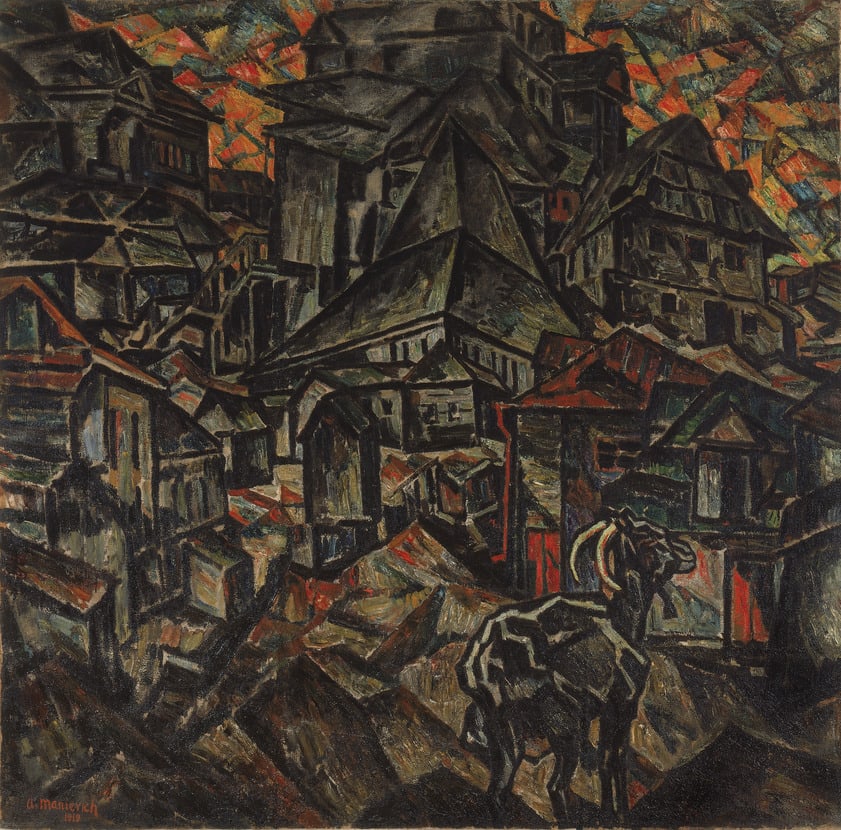
- Artist/Maker:
- Abraham Manievich
- Bio:
- b. 1881, Mstsislaw, Russia (now Belarus); d. 1942, the Bronx, New York
- Title:
- Destruction of the Ghetto, Kiev
- Date:
- 1919
- Medium:
- Oil on canvas
- Dimensions:
- 70 5/8 × 72 1/8 in. (179.4 × 183.2 cm)
- Credit Line:
- Purchase: Gift of Deana Bezark in memory of her husband Leslie Bezark
- Accession Number:
- 1991-30
On View
Like many other Jewish artists of his generation, Abraham Manievich actively supported the 1917 Russian Revolution. Although initially welcomed by Lenin and the new state, Manievich and other modern artists soon found themselves ostracized due to their non-naturalistic aesthetic. This was compounded for some by continued, trenchant antisemitism in the new Soviet Union. While Jews gained civil rights in the Revolution, the civil wars that erupted soon afterward led to renewed antisemitic violence.
Destruction of the Ghetto has its source in the Kyiv pogrom of 1919. With fractured spatial planes and harsh, angular lines, Manievich depicts the tumbledown buildings, the empty streets, and the abandoned synagogue of Kyiv's once-great Jewish community. The year that the painting was made, Manievich’s son was killed while fighting with Bolshevik forces against Ukrainian nationalists, who were opposed to Jewish emancipation. Three years later Manievich immigrated to the United States, where he lived and worked for the rest of his life.
Destruction of the Ghetto has its source in the Kyiv pogrom of 1919. With fractured spatial planes and harsh, angular lines, Manievich depicts the tumbledown buildings, the empty streets, and the abandoned synagogue of Kyiv's once-great Jewish community. The year that the painting was made, Manievich’s son was killed while fighting with Bolshevik forces against Ukrainian nationalists, who were opposed to Jewish emancipation. Three years later Manievich immigrated to the United States, where he lived and worked for the rest of his life.
Information may change as a result of ongoing research.